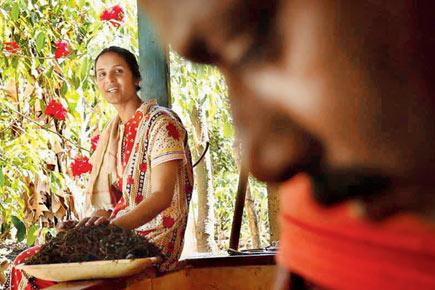The 13th edition of the Mumbai International Film Festival for Documentary, Short and Animation Films ended on Sunday with an awards function


The 13th edition of the Mumbai International Film Festival for Documentary, Short and Animation Films ended on Sunday with an awards function.
ADVERTISEMENT
As the festival was unfolding, news buzzed about Nishtha Jain’s documentary Gulabi Gang, getting a theatrical release.

Capturing reality: Sunanda Bhat’s Have You Seen The Arana? is a beautifully shot film set in Wayanad, Kerala about a vanishing way of life — a gentle, sustaining environment slowly destroyed in the name of development
This is soon after the release of Dylan Mohan Gray’s Fire in the Blood, about malpractices by big pharmaceutical companies. Both these films won awards at MIFF 2014, the former for Best Direction and the latter for Best Debut.
While a cash award and trophy are a way of according honour for the effort, every documentary filmmaker looks for ways of getting their films to an audience. Many of them invest their own savings into making these films, because they feel the need to tell a real story, to document and create a record of something that has moved or affected them. It is understood that nobody can make crores from documentary films, yet this is the medium they choose, because they believe in the impact of cinema.
And a real documentary is cinema, different from the reportage of television news, which also uses the medium to reach an audience, but obviously lacks the insight and depth of a film made with more facts, the wisdom of hindsight, a point of view and technical creativity. Topicality is an asset, but the mark of a great documentary is its truthfulness, which is timeless.
Feature films have chosen to focus on entertainment, which is what the audience expects, so even the rare film about a serious issue will try to sugar coat it with crowd-pleasing elements like songs and comedy. For viewers who want cinema that is a reflection of the times they live in, then documentary it is. Unfortunately, the means of taking some of these remarkable films to an audience is mostly non-commercial. Cinema halls will grudgingly give screening slots to documentaries, TV channels schedule them even more reluctantly, so an alternative exhibition system is established — festivals, film clubs, sale of DVDs, the filmmaker touring with the film and taking it to the doorstep of an audience.
The subjects chosen by documentary filmmakers won’t be touched by the mainstream industry — fiery activist Sampat Pal is probably the only character who has had two documentaries and a feature film Gulaab Gang made on her — starring Madhuri Dixit and Juhi Chawla.
But there are so many stories waiting to be told. Sunanda Bhat’s Have You Seen The Arana? shared an award with Deepa Dhanraj’s Invoking Justice. Bhat’s beautifully shot film set in Wayanad, Kerala, is about a vanishing way of life — a gentle, sustaining environment slowly destroyed in the name of development. A note of on the film perfectly sums it up. “As hills flatten, forests disappear and traditional knowledge systems are forgotten, the film reminds us that this diversity could disappear forever, to be replaced by monotonous and unsustainable alternatives.”
Deepa Dhanraj’s film, set in Tamil Nadu, tells the affirmative story of a woman’s jamaat formed in 2004, in response to the all-male jamaats that apply Sharia laws, sometimes without allowing women to be present to speak for themselves. Since then, this woman’s organisation has weathered resistance, expanded its network to 12 districts and fought for the cause of women; it is an inspiring and heartening movement that deserves to be highlighted.
Kamar Ahmed Simon’s Are You Listening won a Golden Conch too, this one from Bangladesh about how the annual cycle of destruction by floods and rebuilding their lives, affects a young family. Pushpa Rawat’s Nirnay is an amazingly spirited film, a means for the young filmmaker from a conservative society to express her feelings over her break-up with her boyfriend. Coming from the kind of background she does, making a film in which she puts not just the cad of a boyfriend, but her family and society on the mat, required immense courage, which the petite Rawat managed to summon up, and bring out the suffocating world of the North Indian girl living a dead-end existence.
If some of these films reached a mass (that’s a dream!) audience, they would move some traditionalist souls, incite discussion, and maybe, just maybe, sow the seed for change.
What’s wonderful is that current technology — easy to use cameras, DIY editing software — have made documentary filmmaking a relatively inexpensive way to capture reality; with some effort and networking (the encouraging Good Pitch session at MIFF), funding can also be raised, now only if they could find more support to reach viewers. As packed halls at screenings prove that there is an audience out there, maybe minuscule as compared to escapist feature films, but waiting to be tapped. For decades there was only Films Division, later many other organisations joined the support system for documentary, short and animation films. Audiences can do their bit by buying tickets to see good documentaries … or shut up about bad Bollywood films forever.
Deepa Gahlot is an award-winning film and theatre critic and an arts administrator.You can follow her on Twitter @deepagahlot
 Subscribe today by clicking the link and stay updated with the latest news!" Click here!
Subscribe today by clicking the link and stay updated with the latest news!" Click here!







